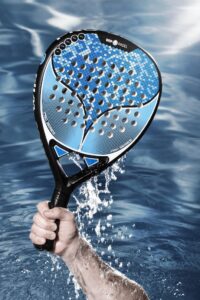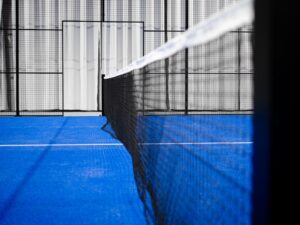Cracking the Code: Understanding Your Opponent’s Serve in Padel
3 min read
Cracking the Code: Understanding Your Opponent’s Serve in Padel
The serve is the most important shot in padel, and it can make all the difference in the game. As a player, you need to be able to read your opponent’s serve in order to anticipate their strategy and prepare for your return shot. In this article, we will give you some tips on how to read your opponent’s serve in padel.
Watch the ball
The first thing you need to do is watch the ball closely as your opponent prepares to serve. By observing the ball’s flight path and spin, you can get a good idea of where the serve is going. If the ball is spinning to your left, it’s likely that your opponent is going to serve to your left. If it’s spinning to your right, they will probably serve to your right. The height of the ball and the speed of the serve can also give you some clues about where the ball is going.
Use your peripheral vision
In addition to watching the ball, you can use your peripheral vision to monitor your opponent’s body movements. Look at their arms, their shoulders, and their hips to see if they are turning to one side or the other. This can give you a further indication of where the serve is going to go.
Read your opponent’s body language
Your opponent’s body language can also give you some important clues about their strategy. If they’re standing more to one side of their box, it’s likely that they’re going to serve in that direction. You can also pay attention to their facial expressions and their overall demeanor to gauge their confidence level and get a sense of their approach to the serve.
Practice makes perfect
Reading your opponent’s serve is not an exact science, and it takes time and practice to get good at it. But with patience and dedication, you can develop your skills and get better at anticipating your opponent’s shots. As you play more games, pay attention to your opponent’s serve and take mental notes of what works and what doesn’t.
Be proactive, not reactive
Finally, don’t let your opponent dictate the terms of the game. If you’re always reacting to their serve, you’re giving them the upper hand. Instead, be proactive and take control of the game by anticipating their serve and positioning yourself accordingly. By doing this, you’ll be able to return their serve more effectively and keep them on the defensive.
In conclusion, learning how to read your opponent’s serve in padel is an essential skill that can help you win more games and become a better player. By watching the ball, using your peripheral vision, reading your opponent’s body language, practicing, and being proactive, you can improve your ability to anticipate their strategy and gain an edge on the court. So go out there and start cracking the code!







